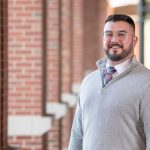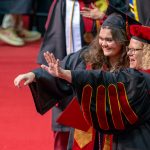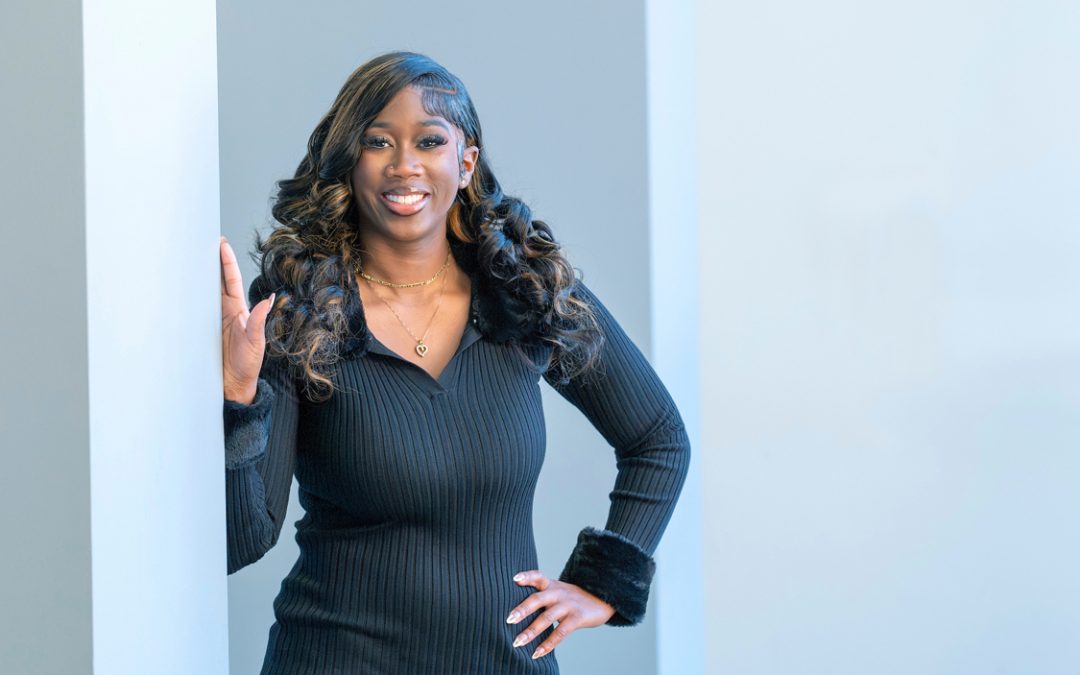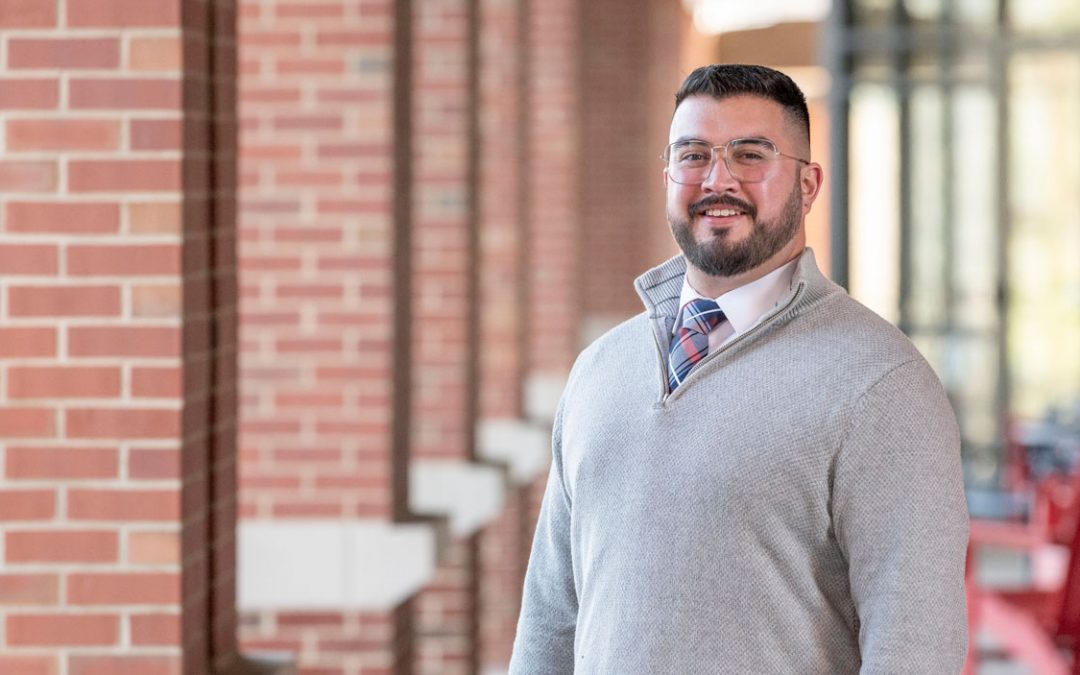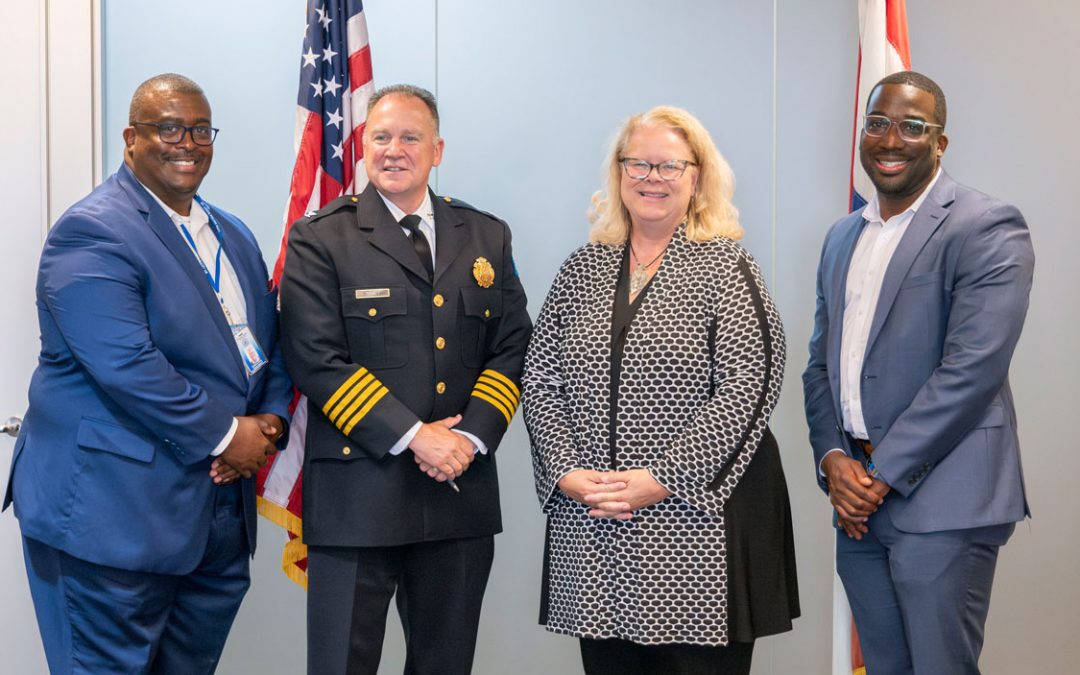
Jeff Sippel (right), a professor in the Department of Art and Design, recently traveled to Serbia to exhibit work alonsgside former student Nebojsa Lazić (left). (Photo courtesy of Jeff Sippel)
Jeff Sippel was perusing Facebook last August when he came across a post from a colleague in Australia sharing images of his work at a new studio in Niš, Serbia.
Sippel, a professor in the Department of Art and Design at the University of Missouri–St. Louis, immediately thought about a previous student, Nebojsa Lazić, who lives in Serbia. He fired off a quick email to see if there might be an opportunity for him to collaborate with his former student in Serbia.
Less than 30 minutes later, Lazić gave Sippel a call to say yes, and within a week, Sippel had an invitation to the Sicevo Printmaking Workshop in Niš from June 3 to 9. Lazić’s only request? That Sippel spend at least five days with him in Serbia.
In addition to serving as the U.S. representative at the international art center’s workshop, which also featured artists from Slovenia, Bulgaria, Italy, Serbia and France, Sippel was invited to have a solo exhibition of his work and a catalogue publication. He collaborated with Lazić on a second exhibition at a gallery in Lazić’s hometown of Novi Sad and traveled to Germany with him.
Sippel, a renowned printmaker whose prowess has taken him across the world, was particularly excited to share some printmaking methods and mediums that artists in other countries might not have been as familiar with.
“Oftentimes, why I’ve been honored to be invited to many places is I research different alternative methods with more modern, contemporary applications,” he said. “There’s no traditional way of working in printmaking. Printmaking is prolific here because we have all the resources, but when I go to other countries, they don’t have all the resources we have. So I become inventive of how they can create work and use what’s available to them to make prints.”
One such technique that Sippel was excited to share, which he was introduced to by Polish printmaker Ewa Budka, is mokulito. The Japanese printmaking method uses a wooden plate instead of the more traditional limestone or metal.
“It opens up a lot of possibilities with materials and resources that they have available, instead of something that’s very difficult to come by to draw and make prints from,” he said. “It’s exciting to see newer applications for what the possibilities are.”

Sippel shared work made with several different techniques, including “Legend,” a lithograph print produced using stencil and monotype. (Photo courtesy of Jeff Sippel)
Sippel was also excited to share some of his prints made using polyester plates, commercial printing plates made from a computer that he’s adapted to use for photography and drawing applications with materials including acrylic paint, acrylic markers and spray paint. He’s also passionate about monotype – a more traditional technique that involves painting on a hard surface with a variety of materials, and then transferring to paper – and shared a few works made in that medium.
Lazić’s work, meanwhile, is more abstract, but Sippel says the two share an admiration for German artists – particularly the expressionists – that comes through in their work. The two have both worked as collaborative printers and enjoy the aspect of getting inside the mind of other artists while collaborating.
“A lot of being an artist is kind of private and we’re all on our own individual tangents, but you have to share when you’re working together,” Sippel says. “We both have that interest and intrigue to share thoughts and ideas with other artists, and it ends up influencing our work as well. I just enjoy conversation, dialogue and thoughts of creativity with other artists.”
From March 18 to 22, Sippel was also the guest artist at Youngstown State University in Ohio, where he was invited by previous student Joe D’Uva to collaborate on a print with students and give a lecture. And coming up in July, he’ll once again be sharing safe techniques for lithographic printing at Making Art Safely in Santa Fe, New Mexico.
Sippel is passionate about traveling both across the country and internationally to learn from and teach other artists. He’s made stops in Colombia, South Africa, Venezuela, Bulgaria, Argentina, Canada and Mexico. He strives to bring those cultural experiences from other countries into the classroom at UMSL, exposing students to new mediums, techniques and ways of thinking about their art. In 2017, he hosted Jorge E. Rodríguez, an artist he first met at a symposium in Argentina, on the UMSL campus for an international exhibition that also included works by Sippel and by Alfonso Fernández, a Chilean artist. In 2012, he also hosted Budka for a workshop on mokulito.
Tom Thompson, who studied under Sippel at UMSL from 2014 to 2018 when he returned to school after a career in corporate construction, appreciated the opportunity to learn from guest artists such as Budka and Fernández through connections fostered by Sippel. He quickly fell in love with mokulito after learning about it from Budka, and Fernández introduced him to encaustic painting, a technique that uses hot wax. He wound up using for what he considers one of his best works.
“I’m a real big admirer of Jeff Sippel,” he says. “And I admire him more and more because I see him switching out litho techniques. There are so many different ways to make a print and Jeff probably has done every one. I watch him transition in and out of different litho methods and doing his theme of a single flower and how much he can get out of each of those methods. It will be vastly different but it’s still a Sippel.
“As a professor, it’s very important to get students to do things they may not have considered doing because they feel comfortable enough to do it. I think all these international travels have given him the ability to walk into any environment and make everyone feel comfortable. If a person feels comfortable, they’re probably going to show you a side of them that they don’t show to everybody.”




